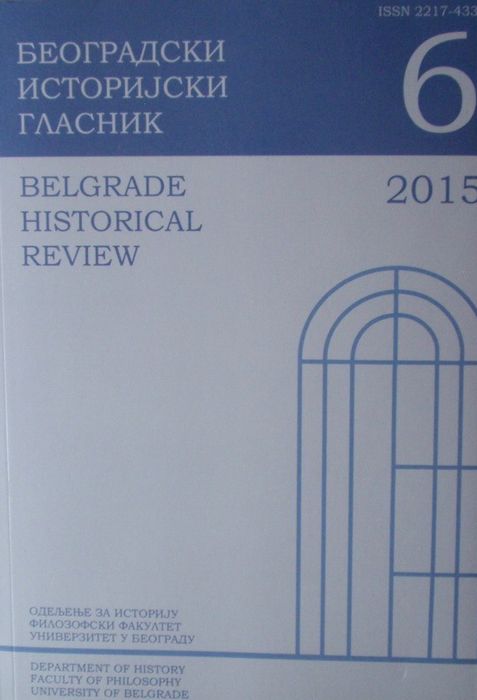ЦРКВА СВ. НИКОЛЕ У СТАНИЧЕЊУ И СРПСКО-УГАРСКО РАЗГРАНИЧЕЊЕ У ПОНИШАВЉУ У XIII–XIV ВЕКУ
CHURCH OF SAINT NICOLAS IN STANIČENJE AND SERBIAN-BULGARIAN DEMARCATION IN PONIŠAVLJE REGION IN 13TH AND 14TH CENTURY
Author(s): Vladimir Aleksić, Igor StamenovićSubject(s): History of Church(es), 13th to 14th Centuries, Eastern Orthodoxy
Published by: Филозофски факултет, Универзитет у Београду
Keywords: Constantinople road; Ponišavlje; Church of St Nicolas in Staničenje; Battle of Velbuzd; border
Summary/Abstract: From the end of 12th century until the final Turkish conquests, Serbian and Bulgarian state interests overlapped in Ponišavlje region. The course and phases of numerous political confl icts were partially influenced by the special geographical and strategic signifi cance of the river Nišava’s basin, that mostly matched with a section of аn intercontinental Constantinople road. Serbian presence was first evidenced during the reign of Grand Župan Stephan Nemanja, who extended his authority to the western edges of the secular and spiritual jurisdiction of the city of Sofia. His successor longed for the same goals of conquering. Stephan Prvovenčani had stopped the attack of Henrich of Flandria, the ruler of the Latin Empire of Constantinople, by blocking the escape roads on the east side of the city of Niš in 1215, as the Vita of Saint Symenon testifies.After great territorial expansion at the beginning of King Milutin’s reign and the seizure of the city of Velbužd and its surroundings in 1282, Ponišavlje acquired characteristics of a border region from the southern side, too. The influence of the Nemanjić dynasty grew after 1293 due to a long term vassal subjugation of Vidin Bulgaria, which most probably had a control over the investigated region. Inner political confl icts in both states at the beginning of 14th century hindered further conquests. However, this condition greatly diminished the pressure on the east Serbian border near the city of Niš. This section of the demarcation line was especially exposed to the possible attacks. It was actually there where the Serbs had expected the enemy’s army on the eve of Velbužd battle 28th July 1330. It has been presumed that the pressure was exerted from the north, too, by the Bulgarian nobleman and a side member of the royal family Belaur, who controlled Vidin Bulgaria at that time. The victorious Serbs surely didn’t miss the chance to expand territory once more. The change followed as a direct consequence of the crucial battle, or as a response to the overthrow of John Stephan from the Trnovo throne. After he took power from the Serbian princess Ana and her son, John Alexander also banished Belaur from Vidin region, most probably in the middle of 1332. The two of them are mentioned as co-rulers in the founders’ inscription from the church of St Nicolas in the village of Staničenje. It was built by a local Bulgarian noble family between 1st September 1331 and 31st August 1332. It may be an additional guideline for determining the chronology of the above mentioned shift on the imperial throne of Bulgaria and many crucial political and military events that followed it. Furthermore, the inscription and archeological evidences around the same temple, such as the precious cloth with the inscription naming the Emperor John Alexander, implicate the possible position of the new border line between the two states. Having in mind the earlier Serbian presence on the southern edge of Ponišavlje region and the characteristics of the road infrastructure, the Serbs probably conquered it coming from the south or the east. Thus, the village of Staničenje and the road to Timok valley further to the north passing the Temac town, whose significance had increased only after that period, were by all chance left to Bulgaria. Serbia overtook the main road on the south of Belava Mountain, between the towns of Pirot and Bela Palanka.
Journal: БЕОГРАДСКИ ИСТОРИЈСКИ ГЛАСНИК
- Issue Year: 2015
- Issue No: 6
- Page Range: 99-117
- Page Count: 19
- Language: Serbian

